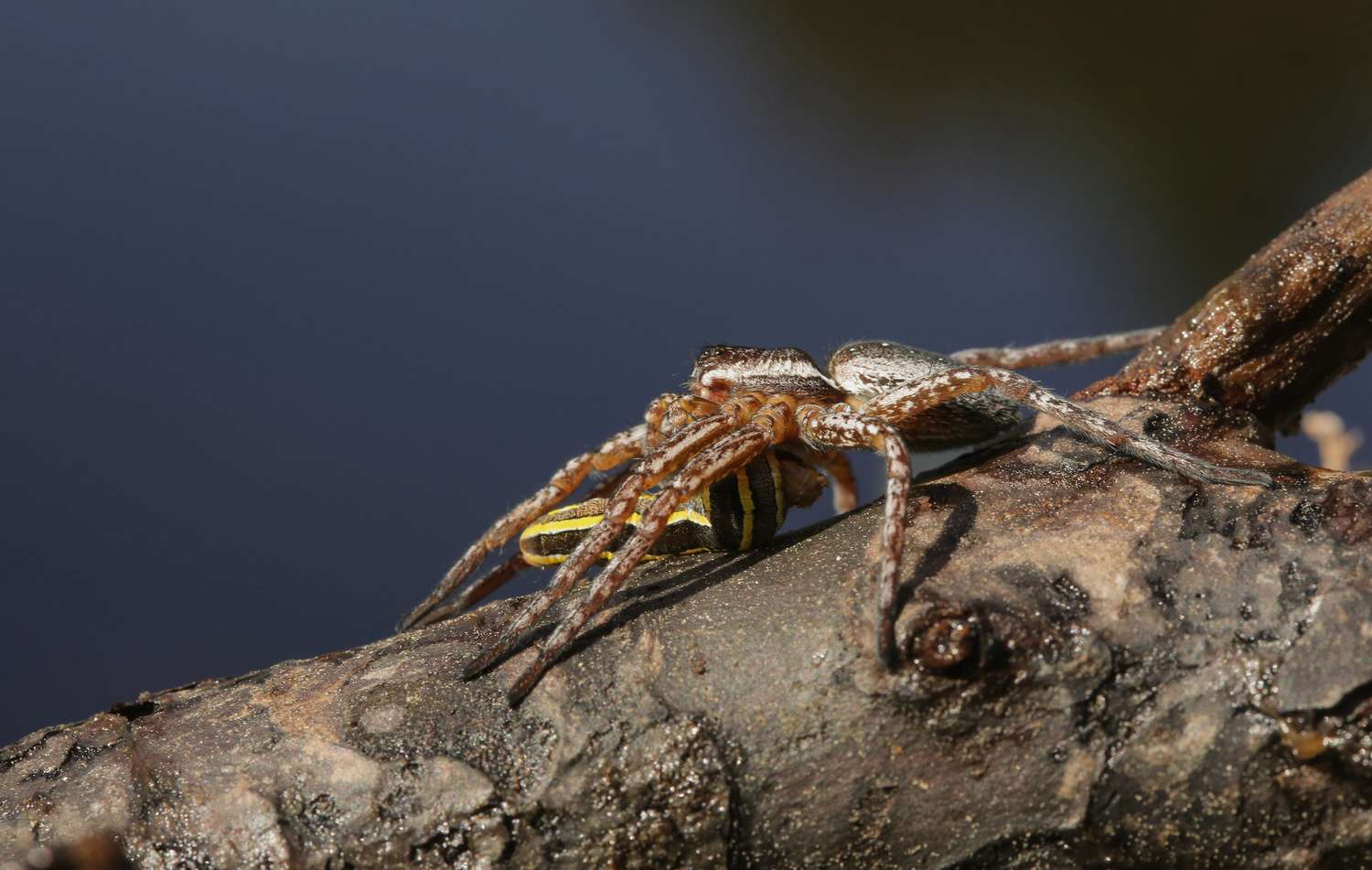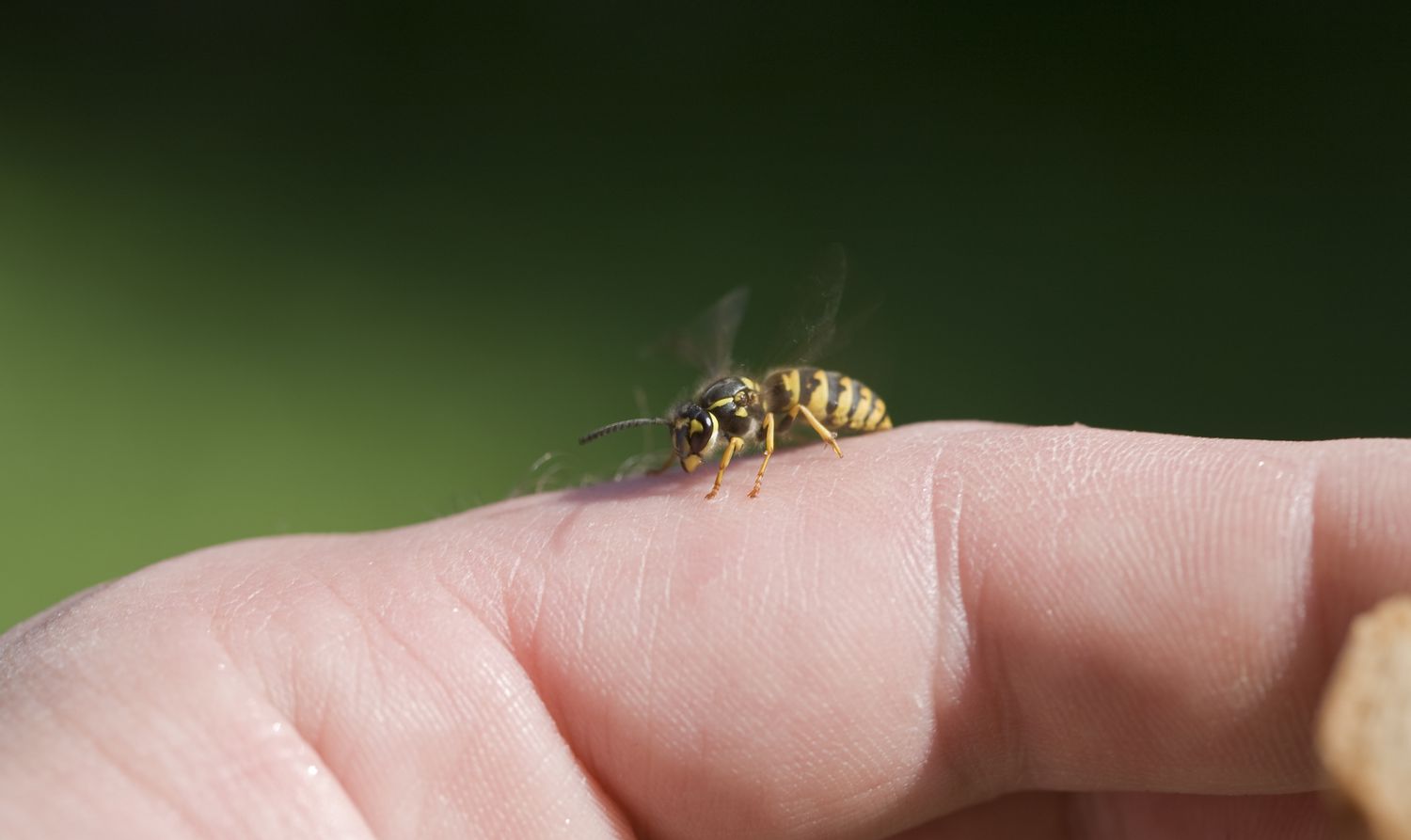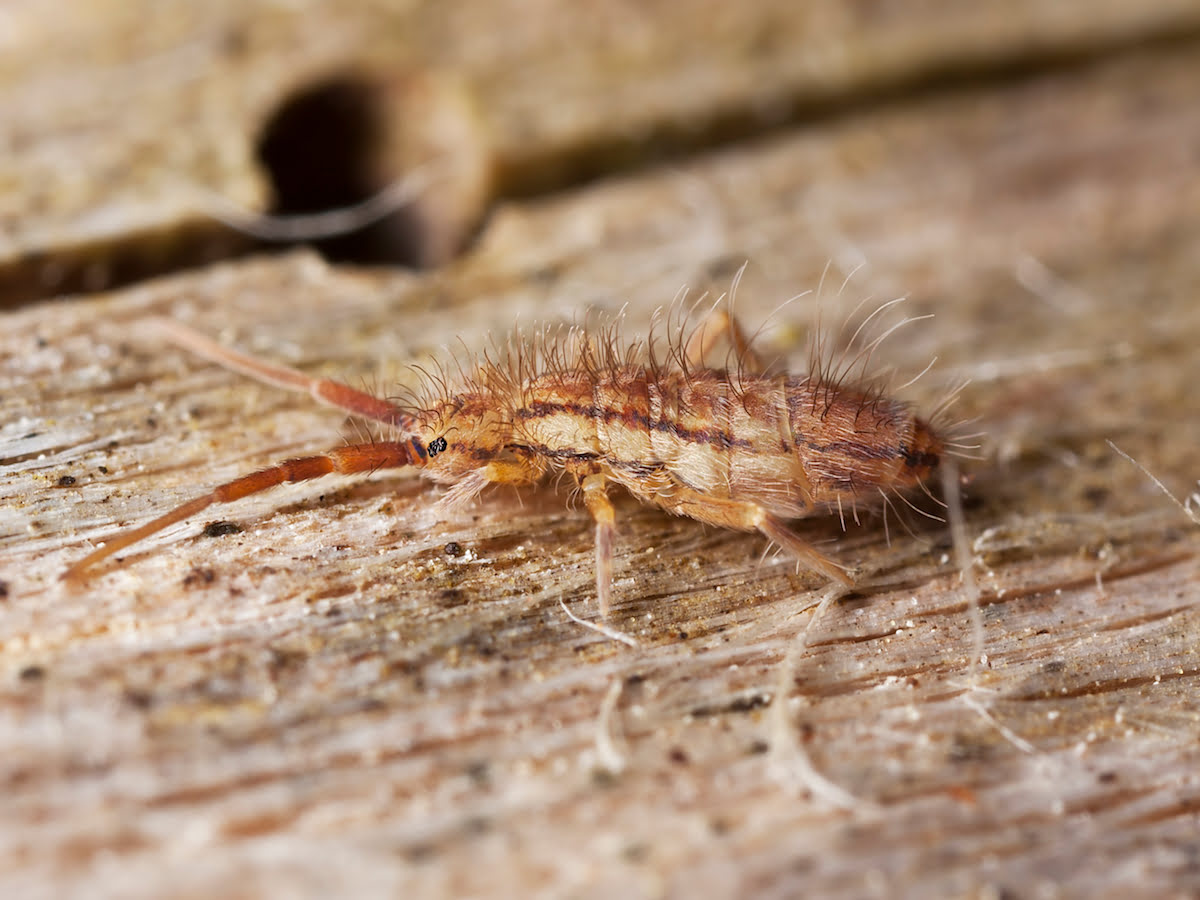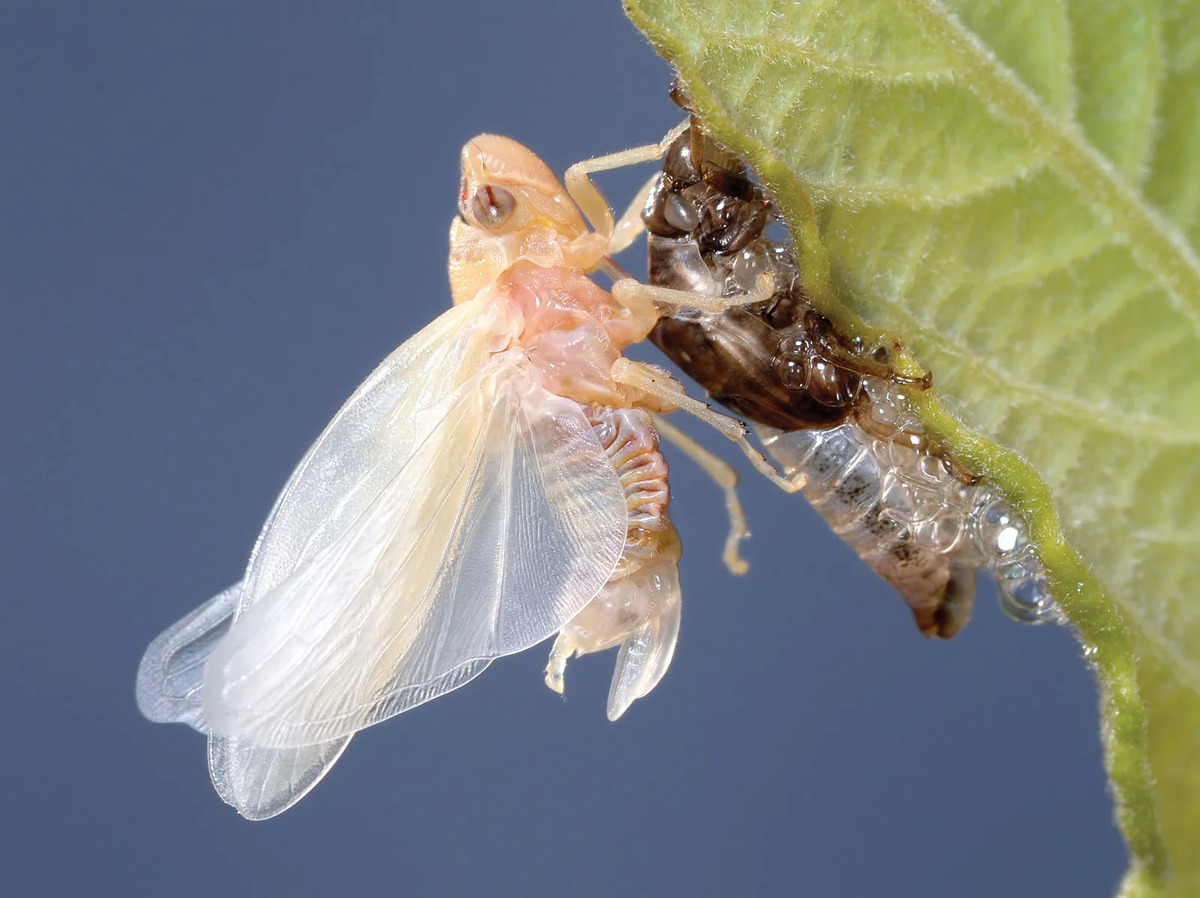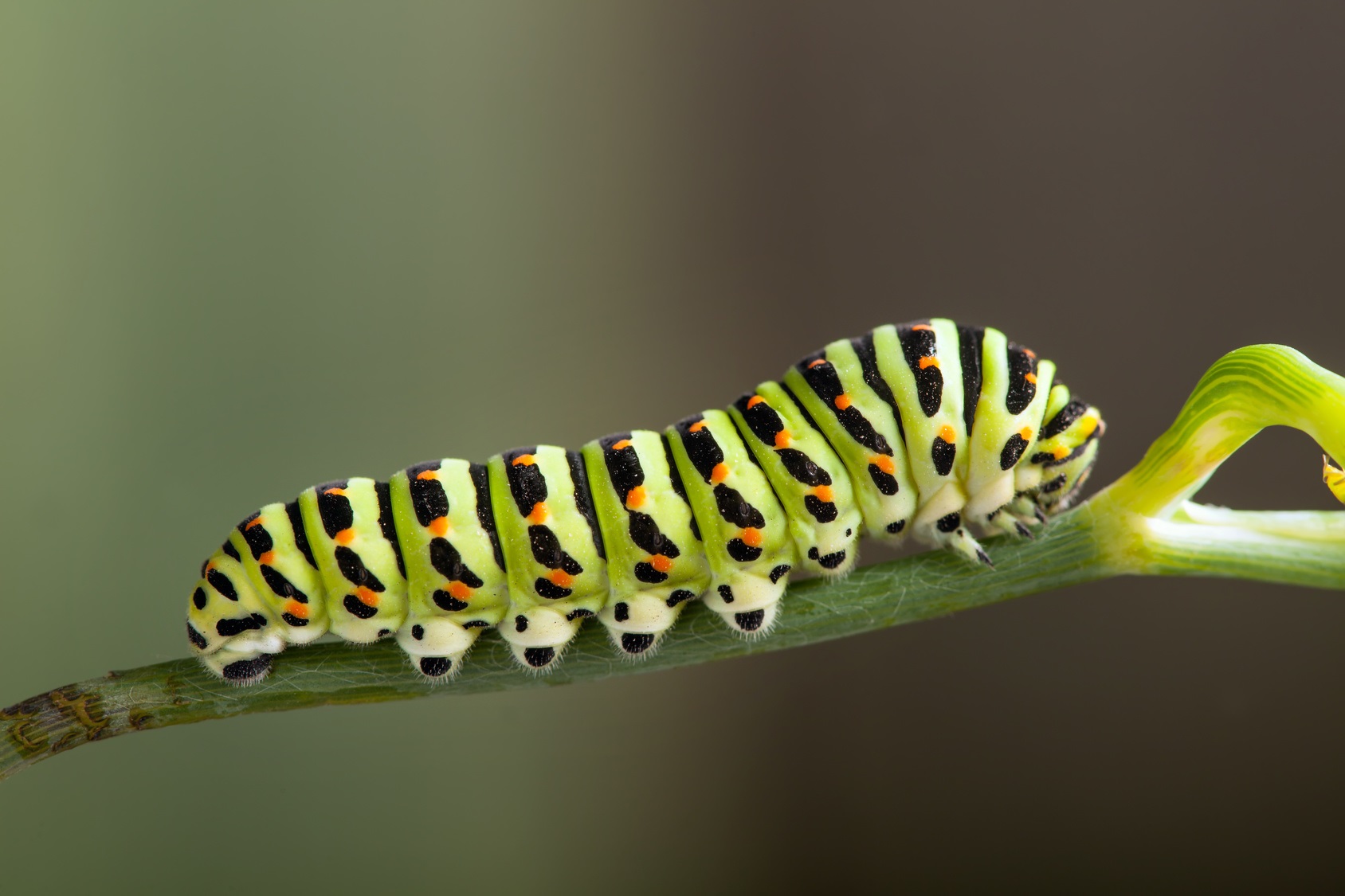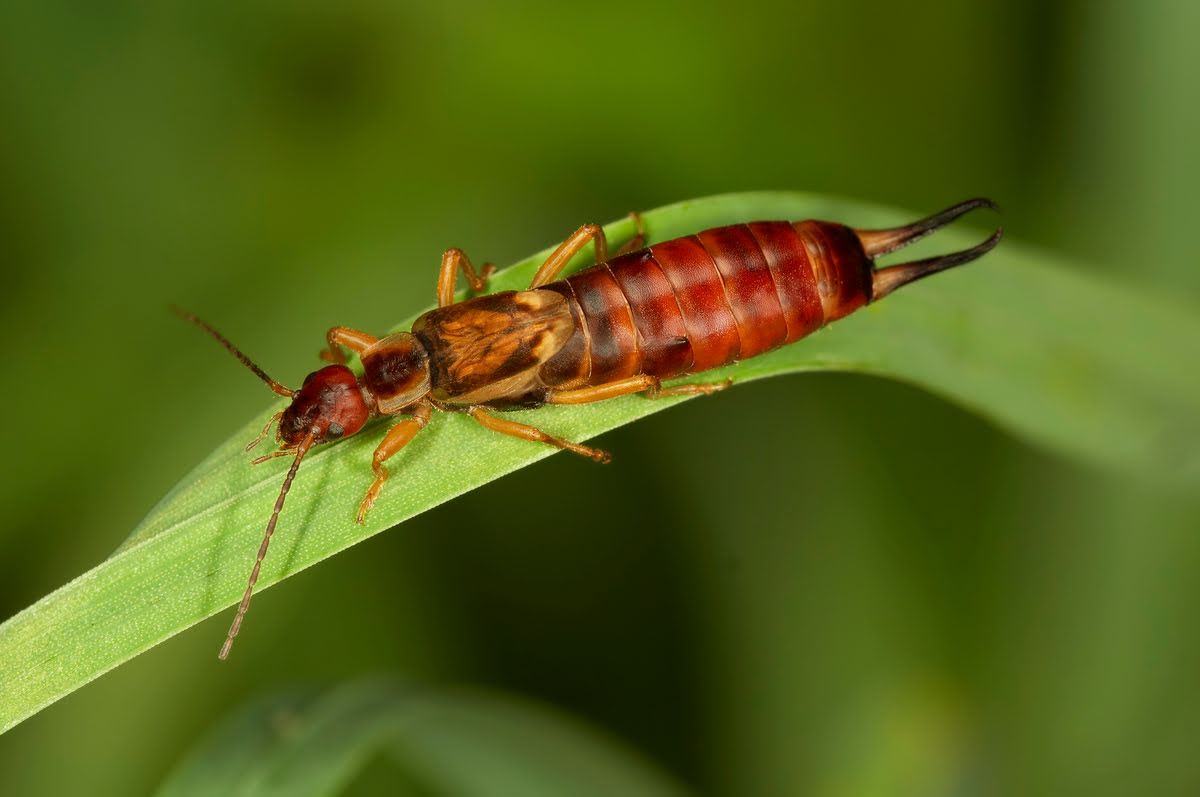Home>Gardening News and Trends>Latest News>What Insects Spread Disease
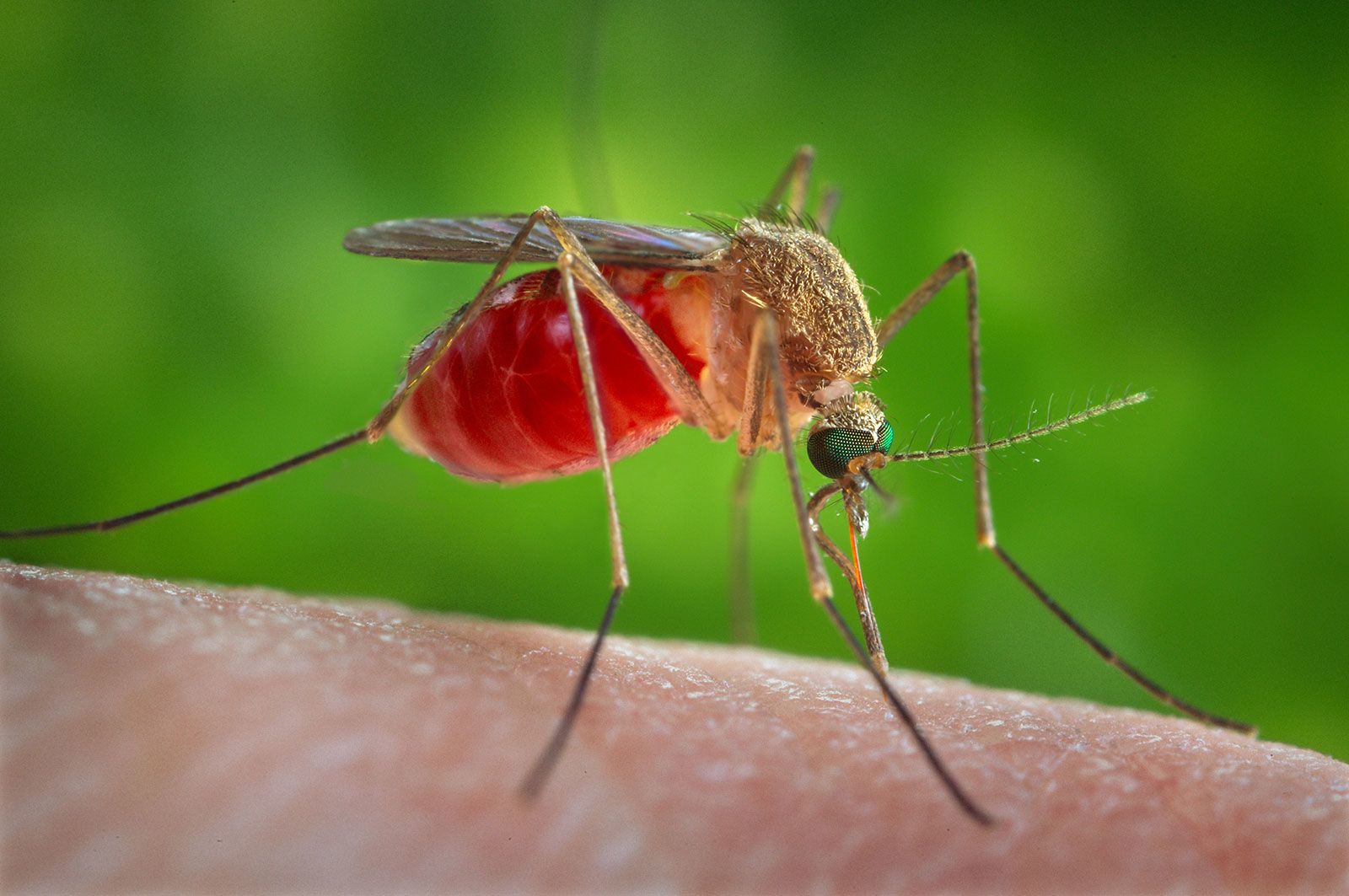

Latest News
What Insects Spread Disease
Modified: January 22, 2024
Discover the latest news on what insects spread disease and stay informed about the risks they pose to human health.
(Many of the links in this article redirect to a specific reviewed product. Your purchase of these products through affiliate links helps to generate commission for Chicagolandgardening.com, at no extra cost. Learn more)
Table of Contents
Introduction
Insects play a significant role in our ecosystem, but they can also be carriers and spreaders of various diseases. These tiny creatures may seem harmless, but their ability to transmit infectious agents can have serious consequences for human health. Understanding the insects that spread diseases is crucial for effective prevention and control strategies.
Mosquitoes, ticks, flies, fleas, bed bugs, lice, mites, and cockroaches are some of the insects known to transmit diseases. Each of these insects has distinct characteristics and behaviors that contribute to their role in disease transmission. By learning about their habits and the diseases they carry, we can take proactive measures to protect ourselves and our communities.
It’s essential to note that not all insects of a particular species carry diseases. Only a small percentage are infected and capable of transmitting pathogens. However, even this small fraction of infected insects can pose a significant threat due to their ability to spread diseases rapidly.
Preventing insect-borne diseases requires a comprehensive approach that involves personal protective measures, environmental management, and public health interventions. By understanding the insects’ habitats, breeding grounds, and disease transmission patterns, we can develop targeted strategies to minimize the risk of infection.
In this article, we will explore some common insects and the diseases they can spread. Understanding the risks associated with these insects and implementing appropriate preventive measures can help safeguard our health and well-being.
Mosquito-borne Diseases
Mosquitoes are notorious for their ability to transmit diseases to humans through their bites. These tiny insects are responsible for spreading some of the most significant infectious diseases worldwide.
One of the most well-known mosquito-borne diseases is malaria. Transmitted by female Anopheles mosquitoes infected with the Plasmodium parasite, malaria affects millions of people every year, causing flu-like symptoms, severe illness, and even death if not promptly treated. Although malaria is prevalent in tropical and subtropical regions, it can also be found in some temperate regions.
Dengue fever is another mosquito-borne disease of major concern. It is caused by the dengue virus transmitted by the Aedes mosquito. Symptoms include high fever, severe joint and muscle pain, headache, and rash. In severe cases, dengue fever can lead to dengue hemorrhagic fever or dengue shock syndrome, which can be fatal.
Chikungunya is a viral disease transmitted by the Aedes mosquito, primarily the Aedes aegypti species. It causes fever, severe joint pain, muscle pain, headache, and rash. Although Chikungunya is rarely life-threatening, the joint pain can be debilitating and persist for months or even years.
Zika virus, also transmitted by Aedes mosquitoes, gained global attention in recent years due to its association with birth defects and neurological complications. Pregnant women are especially vulnerable as Zika virus infection during pregnancy can lead to microcephaly and other congenital abnormalities in infants.
West Nile virus is primarily transmitted to humans through the bites of infected Culex mosquitoes. Most people infected with West Nile virus experience mild or no symptoms, but in severe cases, it can lead to inflammation of the brain or spinal cord, causing neurological complications.
Preventing mosquito bites and controlling mosquito populations are crucial in reducing the spread of mosquito-borne diseases. This can be achieved through measures such as using insect repellents, wearing protective clothing, eliminating standing water breeding sites, and implementing mosquito control programs.
By understanding the diseases transmitted by mosquitoes and taking appropriate preventive measures, we can minimize the risk of infection and protect ourselves and our communities from these potentially life-threatening illnesses.
Tick-borne Diseases
Ticks are small arachnids that feed on the blood of mammals, birds, and reptiles. Unfortunately, they can also transmit various diseases to humans through their bites. Tick-borne diseases are a growing concern in many parts of the world.
Lyme disease is one of the most well-known tick-borne illnesses. It is caused by the bacterium Borrelia burgdorferi, which is transmitted to humans through the bite of infected black-legged ticks, commonly known as deer ticks. Early symptoms of Lyme disease may include fever, fatigue, headache, muscle and joint aches, and a characteristic “bull’s-eye” rash. If left untreated, Lyme disease can lead to more severe symptoms affecting the joints, heart, and nervous system.
Another tick-borne disease of concern is Rocky Mountain spotted fever (RMSF). It is caused by the bacterium Rickettsia rickettsii, which is transmitted to humans through the bites of infected American dog ticks, Rocky Mountain wood ticks, and brown dog ticks. Early symptoms of RMSF may include fever, headache, rash, abdominal pain, and muscle pain. If left untreated, the infection can lead to serious complications affecting the kidneys, heart, and respiratory system.
Anaplasmosis is a bacterial infection transmitted by black-legged ticks and western black-legged ticks. It can cause flu-like symptoms, including fever, chills, headache, muscle aches, and fatigue. If left untreated, anaplasmosis can lead to severe complications such as organ failure.
Babesiosis is a malaria-like parasitic infection transmitted by black-legged ticks and western black-legged ticks. It can cause symptoms such as fever, fatigue, muscle aches, and anemia. In severe cases, babesiosis can lead to complications affecting the kidneys, liver, and cardiovascular system.
Preventing tick bites and conducting regular tick checks are essential in reducing the risk of tick-borne diseases. It’s advisable to wear long sleeves and pants when in tick-infested areas, use insect repellents containing DEET, and thoroughly inspect the body and clothing for ticks after spending time outdoors. If a tick is found attached to the skin, it should be promptly and carefully removed.
By taking preventive measures and being aware of the symptoms of tick-borne diseases, we can minimize the impact of these illnesses and protect ourselves from the potential long-term consequences they can bring.
Fly-borne Diseases
Flies are ubiquitous insects that can transmit diseases through their feeding habits and contaminating surfaces with pathogens they pick up during their travels. There are several diseases associated with fly-borne infections, which pose a significant risk to human health.
One of the most well-known fly-borne diseases is typhoid fever, caused by the bacterium Salmonella Typhi. Flies can transmit the bacteria by landing on contaminated material, such as feces, and then transferring it to food or surfaces. Typhoid fever can cause high fever, abdominal pain, headache, and other symptoms, and it can be life-threatening if not treated properly.
Cholera is another waterborne disease that can be transmitted by flies. The bacterium Vibrio cholerae causes severe intestinal infection, leading to profuse watery diarrhea and dehydration. Flies can contribute to the spread of cholera by contaminating food and water sources.
Conjunctivitis, commonly known as pink eye, can also be transmitted through fly bites or the contact of fly-contaminated surfaces with the eyes. The condition causes inflammation and redness of the outer membrane of the eye, leading to discomfort and sometimes vision impairment.
Additionally, flies can transmit Enteric parasites such as Cryptosporidium and Giardia, which cause gastrointestinal infections characterized by diarrhea, abdominal pain, and vomiting.
Preventing fly-borne diseases requires proper hygiene practices and the management of fly populations. It is crucial to maintain clean living spaces, dispose of garbage properly, and protect food from fly contamination. Using screens on windows and doors, keeping outdoor areas clean and free from breeding sites, and using insect repellents can also deter flies from settling and spreading diseases.
By implementing these preventive measures and raising awareness about the potential risks of fly-borne diseases, we can reduce the transmission of these infections and protect our health and well-being.
Flea-borne Diseases
Fleas are small, wingless insects that feed on the blood of mammals and birds. While their primary hosts are often animals, they can also transmit diseases to humans through their bites. Flea-borne diseases pose a significant health risk and require attention to prevent their spread.
One of the most well-known flea-borne diseases is the bubonic plague. Fleas can transmit the bacterium Yersinia pestis by biting infected rodents and then biting humans. The bubonic plague is characterized by fever, chills, swollen lymph nodes, and severe fatigue. If left untreated, it can result in serious complications and be life-threatening.
Typhus is another disease that can be transmitted by fleas. There are two types of typhus: epidemic typhus and murine typhus. Epidemic typhus, caused by the bacterium Rickettsia prowazekii, results in high fever, headache, rash, and muscle pain. Murine typhus, caused by the bacterium Rickettsia typhi, leads to similar symptoms but is generally milder in intensity. Fleas that infest rats and other rodents play a crucial role in the transmission of these diseases to humans.
Tungiasis is a skin infestation caused by the burrowing flea Tunga penetrans, also known as the jigger flea. It can cause painful lesions on the feet, leading to inflammation and infection. Tungiasis is commonly found in tropical and sub-tropical regions, where sanitation and hygiene may be limited.
In addition to these diseases, fleas can also transmit Bartonella henselae, the bacterium responsible for cat scratch disease. This condition occurs when an infected flea bites a cat and then the cat scratches or bites a person, leading to redness, swelling, and other symptoms at the site of infection.
To prevent flea-borne diseases, it is important to keep our living spaces and pets clean and free from flea infestations. Regularly vacuuming carpets and upholstery, washing bedding and pet bedding, and treating pets with flea control products can help minimize the risk of flea bites. It is also essential to avoid contact with stray animals and their fleas.
By taking these preventive measures, we can reduce the chances of flea-borne diseases and protect ourselves and our pets from these potentially serious and uncomfortable infections.
Bed Bug-borne Diseases
Bed bugs are small, nocturnal insects that feed on the blood of humans and animals. While they are not known to transmit diseases directly, they can still have negative impacts on human health and well-being.
Bed bug bites can cause itching, redness, and discomfort, leading to sleep disturbances and emotional distress. Scratching the bites can break the skin, increasing the risk of secondary bacterial infections. In some cases, individuals may develop an allergic reaction to the bites, further intensifying the symptoms.
Aside from the physical discomfort, the presence of bed bugs can also have psychological effects. Infestations can cause anxiety, stress, and insomnia, as many people experience a sense of invasion and feel uncomfortable in their own homes.
Although bed bugs are not known to transmit diseases, there have been limited reports and studies suggesting a potential link between bed bugs and the transmission of certain pathogens. For example, researchers have found that bed bugs can harbor and carry bacteria such as Methicillin-resistant Staphylococcus aureus (MRSA) and vancomycin-resistant Enterococcus faecium (VRE), which can cause serious infections in humans.
It’s important to note that while the presence of these bacteria on bed bugs is confirmed, the actual risk of transmission to humans is considered low. The primary mode of transmission for MRSA and VRE remains person-to-person contact or contact with contaminated surfaces.
Nevertheless, it is crucial to address bed bug infestations promptly and effectively. Professional pest control services can be employed to eliminate bed bugs and prevent re-infestation. Additionally, individuals should practice good personal hygiene and ensure that their living spaces are kept clean and clutter-free to discourage the presence and spread of bed bugs.
Education and awareness about bed bug prevention and control are essential in minimizing the impact of these pests on public health and well-being. By understanding the risks associated with bed bugs and taking appropriate measures, we can maintain a safe and comfortable living environment.
Lice-borne Diseases
Lice are parasitic insects that infest humans and feed on their blood. While lice infestations can be highly uncomfortable and bothersome, they are not typically known to transmit diseases.
Head lice, for example, are common among children, especially in school settings. They can spread through close personal contact and sharing personal items such as hats, combs, and pillows. While head lice can cause itching and irritability, they are not known to transmit diseases.
Body lice, on the other hand, can cause more significant health concerns. These lice infest clothing and only move to the body to feed. Body lice infestations are often seen in individuals living in unhygienic conditions or experiencing homelessness. The intense itching caused by body lice bites can lead to excoriation and secondary bacterial skin infections.
Although lice do not transmit diseases directly, they can contribute to the spread of other infections. Scratching the itchy bites caused by lice can break the skin, making it susceptible to bacterial infections, such as impetigo.
Preventing lice infestations involves practicing good personal hygiene and avoiding close contact with individuals known to have lice. Regularly washing and drying clothing, bedding, and personal items at high temperatures can help kill lice and nits (lice eggs).
If an infestation occurs, treatment options include over-the-counter or prescription medications specifically formulated to eliminate lice. It is important to follow the instructions carefully and conduct thorough cleaning and vacuuming of the infested areas to remove any stray lice or eggs.
Ultimately, while lice infestations can be a nuisance, they do not pose a significant risk in terms of disease transmission. By maintaining good personal hygiene and taking prompt action in the event of an infestation, we can manage and prevent the discomfort associated with lice bites.
Mite-borne Diseases
Mites are tiny arthropods that can infest humans and animals, causing various diseases and discomfort. These microscopic pests are known to transmit certain diseases, making them a concern for human health.
One of the most well-known mite-borne diseases is scabies. Scabies is caused by the microscopic mite Sarcoptes scabiei, which burrows into the skin and lays eggs. This contagious skin infection is characterized by intense itching, rash, and pimple-like bumps. Scratching the affected areas can lead to skin infections and complications.
Another mite-borne infection is known as chigger bites, caused by the larval stage of mites called chiggers. These mites are found in grassy and wooded areas and attach themselves to the skin, causing intense itching and red, inflamed welts. While chigger bites can be uncomfortable, they do not transmit diseases.
Dust mites, although not known to transmit diseases, can cause allergic reactions in some individuals. Inhalation or contact with dust mite droppings and body parts can trigger symptoms such as sneezing, coughing, wheezing, and a runny nose in individuals with dust mite allergies.
Scabies and other mite infestations are typically treated with topical medications prescribed by healthcare professionals. These medications aim to kill the mites, alleviate symptoms, and prevent the spread of the infestation.
To prevent mite-borne diseases, maintaining good personal hygiene and cleanliness in living spaces is crucial. Regularly washing bedding, clothing, and stuffed toys in hot water, as well as vacuuming and dusting frequently, can help minimize mite populations. Additionally, avoiding close contact with individuals known to have a mite infestation can reduce the risk of transmission.
By understanding the risks associated with mites and taking appropriate preventive measures, we can minimize the discomfort and potential health implications associated with mite-borne diseases.
Cockroach-borne Diseases
Cockroaches are resilient insects that are known to thrive in various environments, including human homes and buildings. While they are often associated with unclean or unsanitary conditions, cockroaches can be carriers of disease-causing organisms, making them a potential health concern.
One of the primary ways that cockroaches can spread diseases is by contaminating food and surfaces with their feces, saliva, and body parts. This can lead to the transmission of pathogens that cause various illnesses.
Asthma and allergies are common health issues associated with exposure to cockroaches. The proteins found in cockroach saliva, feces, and shedding body parts can trigger allergic reactions in susceptible individuals. Symptoms may include coughing, wheezing, chest tightness, nasal congestion, and skin rashes.
In addition to allergic reactions, cockroaches can also transmit bacteria, viruses, and parasites. Some of the diseases associated with cockroach infestations include:
- Salmonellosis: Cockroaches can carry the bacteria Salmonella on their bodies and contaminate food and food preparation surfaces, leading to gastrointestinal infections.
- Dysentery: Cockroaches can transmit the bacteria Shigella, which can cause dysentery, a severe form of diarrhea with blood in the stool.
- Typhoid fever: Cockroaches can carry the bacteria that causes typhoid fever and contaminate surfaces and utensils, leading to the spread of the disease through contaminated food and water.
- Polio: Studies have suggested that cockroaches can carry and spread the polio virus, although the role they play in its transmission is not fully understood.
Preventing cockroach infestations is essential in reducing the risk of associated diseases. This involves practicing good sanitation and hygiene, such as keeping kitchens and dining areas clean, storing food in sealed containers, promptly removing garbage, and sealing cracks and openings where cockroaches can enter. Regular pest control measures may also be necessary to eliminate existing infestations.
By taking proactive measures to prevent cockroach infestations and maintaining a clean living environment, we can reduce the risk of cockroach-borne diseases and promote a healthier and safer living space.
Conclusion
Insects play a significant role in the transmission of diseases. Mosquitoes, ticks, flies, fleas, bed bugs, lice, mites, and cockroaches are known carriers of various pathogens that can cause serious health implications for humans.
Mosquitoes are notorious for transmitting diseases such as malaria, dengue fever, and Zika virus. Tick-borne diseases like Lyme disease and Rocky Mountain spotted fever pose prevalent health risks, while flies can spread diseases such as typhoid fever and cholera.
Fleas can transmit the bubonic plague, while bed bugs can cause discomfort, allergic reactions, and potential bacterial infections. Lice, although not known for transmitting diseases, can cause itching and secondary infections. Mites are associated with scabies and allergic reactions, and cockroaches can carry and spread pathogens that cause asthma, allergies, and various gastrointestinal diseases.
Prevention and control of these insect-borne diseases involve practicing good hygiene, maintaining clean living spaces, and implementing targeted pest control measures. These measures include using insect repellents, wearing protective clothing, eliminating breeding grounds for mosquitoes and ticks, regular cleaning and vacuuming to control fleas, adopting proper personal hygiene practices to prevent lice infestations, and maintaining cleanliness to deter mites and cockroaches.
Education and awareness about the risks associated with insect-borne diseases are crucial for individuals and communities to protect themselves and reduce the spread of these illnesses. It is essential to understand the signs, symptoms, and appropriate interventions for each specific insect-borne disease.
By being vigilant and proactive in prevention, we can minimize the impact of insect-borne diseases on our health and well-being. Through concerted efforts in personal protection, environmental management, and public health strategies, we can create safer and healthier environments for ourselves and our communities.
